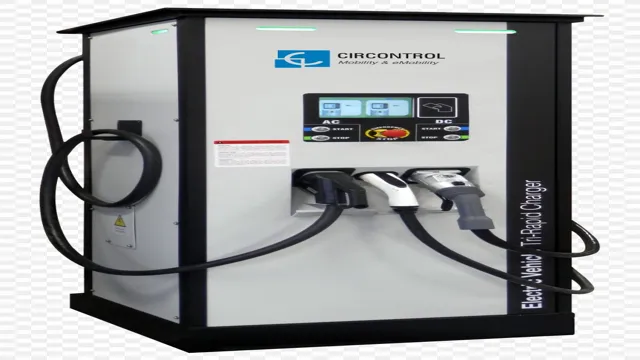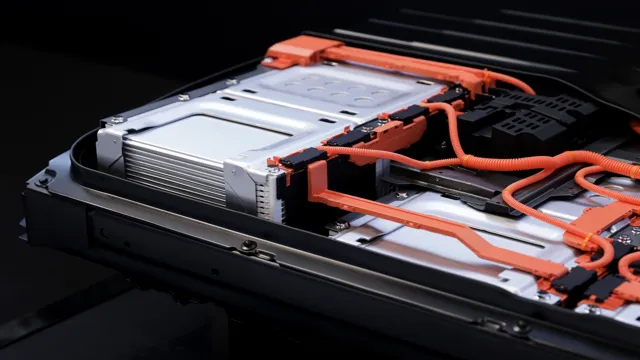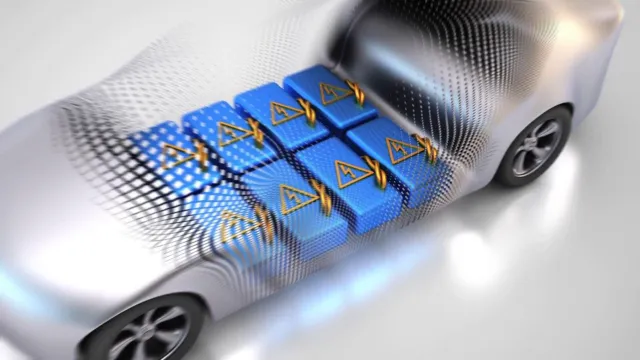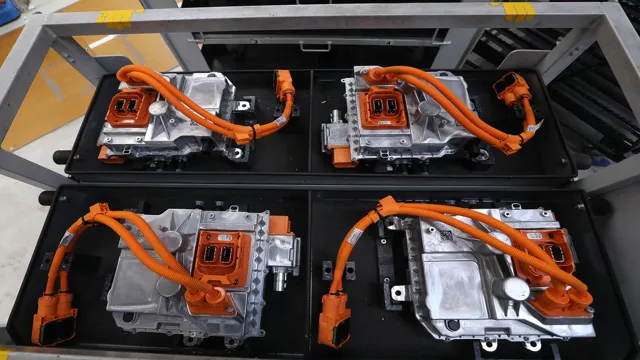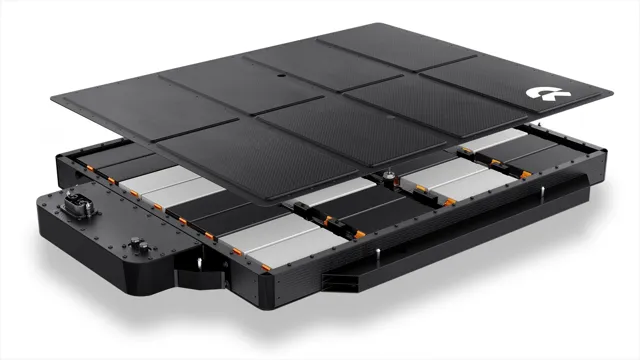Revolutionizing Electric Cars with Arduino: The Ultimate Guide to Battery Management System
Have you ever dreamed of owning an electric car but were put off by the high cost of battery management systems? Well, with the help of an Arduino and some smart programming, you may be able to build your own affordable battery management system and enjoy the benefits of owning an electric car without breaking the bank. In this blog post, we will explore how an Arduino electric car battery management system works and how it can help you optimize your battery life and save money. So, buckle up and let’s dive into the world of DIY electric car battery management systems!
Introduction
If you’re into electrifying projects or an electric car enthusiast, you’ve definitely heard of the Arduino electric car battery management system. This exciting technology is making it possible to monitor the performance of a car’s battery and adjust the charging cycle to maximize efficiency and extend the battery life. With the Arduino platform’s flexibility and versatility, it is possible to build tailor-made battery management systems for different car models and battery types.
The system can also integrate with other sensors in the car, such as temperature sensors, voltage sensors, and current sensors, to obtain real-time data on battery health and performance. With this data, the system can alert the driver in case of an issue and even take corrective actions, such as shutting down the charging cycle before it damages the battery. With the Arduino electric car battery management system, you’re in control of your car’s battery, ensuring it lasts longer and performs optimally.
What is an Electric Car Battery Management System?
Electric Car Battery Management System In the era of climate change, electric cars have become a major player in the automobile market. But, have you ever wondered how these cars store and manage their electricity? That’s where Electric Car Battery Management System (BMS) comes into play. It is an essential component of any electric car that helps to regulate, monitor, and optimize the performance of its battery cells.
The BMS ensures that the battery pack is operating within safe limits and controls the charging and discharging process to extend the battery’s lifespan. Think of it as the brain of the battery pack, constantly monitoring and adjusting its functions to ensure optimal performance. In short, BMS is one of the critical components that make electric cars more efficient and sustainable than their conventional counterparts.
Why Use Arduino for Battery Management?
Arduino, battery management. Introduction: If you’re someone who is interested in battery management, then you may have heard of the Arduino platform. Arduino is an open-source programming platform that is designed for beginners and experts alike.
It is perfect for managing batteries because it offers a range of features that can be customized to your specific needs. In this blog post, we will explore why Arduino is such a great tool for battery management and how it can be used to manage batteries more efficiently. So, if you’re interested in learning more about the benefits of Arduino for battery management, read on!
Designing the Battery Management System
Designing the battery management system for an Arduino electric car can be a complex but crucial task. The battery management system is responsible for controlling and monitoring the battery’s charging and discharging, ensuring its safety and longevity. To design the system, one must consider the battery’s chemistry, capacity, and environmental factors.
The system must be able to accurately measure the battery’s voltage, current, and temperature to avoid overcharging or over-discharging. Additionally, it should have a mechanism to balance the cells’ charge to prevent damage and improve performance. The Arduino can easily integrate with sensors to monitor the battery’s state and programmed to control the charging process, providing an efficient and safe power source for the electric car.
A well-designed battery management system is crucial for the electric car’s overall performance, reliability, and safety.
Determining the Battery Requirements
When designing a Battery Management System (BMS), it is crucial to determine the battery requirements. The BMS design must account for the battery’s capacity, voltage, and chemistry to ensure optimal performance and safety. Additionally, the BMS must consider the application’s power demands and charging requirements to ensure the battery can perform as needed.
The first step in designing the BMS is to identify the battery’s capacity and voltage. This information is critical because it determines the battery’s power output and the number of cells required to meet the application’s power demands. Additionally, the BMS must consider the battery’s chemistry, such as lead-acid, lithium-ion, or nickel-cadmium.
Each chemistry requires different management protocols to ensure safety and longevity. Once the battery requirements are determined, the BMS can be designed to manage the battery’s charging and discharge cycles. This involves monitoring the battery’s current, temperature, and voltage and adjusting the charge and discharge rates to ensure optimal performance and prevent battery damage.
The BMS must be able to communicate with the battery to obtain real-time data, which is used to calculate the State of Charge (SoC) and State of Health (SoH) of the battery. Overall, designing a BMS requires in-depth knowledge of batteries, electrical engineering, and data management. By determining the battery requirements and implementing a robust BMS, the battery’s performance can be optimized, and its lifespan extended.
Choosing the Appropriate Arduino Board
When designing a battery management system, it’s crucial to choose the appropriate Arduino board for your project. The right board will depend on factors such as the number of batteries, voltage requirements, and desired functionality. One popular option is the Arduino UNO, which is a versatile board with a variety of inputs and outputs.
However, for more complex designs, you might consider the Arduino Mega, which has more digital and analog pins to support more sensors and devices. Another option is the Arduino Due, which has a higher clock speed for faster processing. Ultimately, your choice of board will depend on your specific project needs and budget.
With careful consideration, you can select the perfect board to power your battery management system and bring your project to life.
Selecting Other Components
When designing the battery management system, it’s essential to select other components that will work in harmony with it. The battery management system relies heavily on other components such as battery chargers, sensors, and control modules to perform optimally and ensure that the battery pack operates effectively. You’ll need to consider the compatibility of these components with the battery management system to ensure their effectiveness.
The sensors used should be precise in measuring various parameters, including voltage, current, and temperature. Battery chargers are also essential components that effectively charge the battery to the needed level, and control modules manage the battery. Therefore, it’s crucial to select the right components to guarantee the battery management system’s overall functionality and performance.
Setting Up the Battery Management System
If you’re building an electric car or upgrading an existing one, a vital component you’ll need to set up is a battery management system (BMS). With the help of an Arduino microcontroller, you can create a custom BMS that monitors and manages your battery cells to ensure they are balanced and operating optimally. By setting up a BMS, you can avoid overcharging or discharging your battery pack, which can damage your cells and decrease their lifespan.
An arduino electric car battery management system can also provide you with insights on your battery pack’s health, alerting you if there are any problems or abnormalities. With the right tools and expertise, setting up a BMS for your electric car can be a smooth and worthwhile process.
Installing the Arduino Software
If you’re setting up a battery management system, you’ll need to install the Arduino software first. The Arduino software is a free tool used to program, write, and upload code to your battery management system. To get started, you’ll first need to connect your Arduino board to your computer.
Once you’ve done so, you can download the latest version of the Arduino software from the official website. After downloading the software, simply run the installer and follow the on-screen instructions to install it onto your computer. Once you’ve successfully installed the software, you’ll be able to start programming and writing your code for your battery management system.
By installing the Arduino software, you’ll be able to easily manage and control your batteries’ charge and discharge cycles, ensuring that they perform optimally for a long time to come.
Connecting the Components
Setting up the battery management system is a crucial step in connecting the components of your device. The battery management system, or BMS, is responsible for monitoring and regulating the power flow from the battery to the rest of the device. To set up the BMS, you’ll need to connect it to the battery as well as to the other components in your device.
This can be a bit tricky, as there are often many wires to connect and different components to coordinate. However, with a little patience and care, you can connect everything together smoothly. Once the BMS is set up, it will allow you to monitor the battery’s health, prevent overcharging and overheating, and ensure that your device is functioning safely and efficiently.
So take your time, follow the instructions carefully, and soon you’ll have a fully connected and operational battery management system.
Coding the Arduino Board
When coding the Arduino board for a battery management system, it’s crucial to set up the system properly to ensure optimal performance. One of the first steps is to calibrate the voltage sensor to accurately measure the battery’s voltage level. This is important as inaccurate readings can harm the battery and other connected components.
Along with calibrating the sensor, it’s essential to set up the battery discharge protection and charging circuitry to prevent overcharging and overdischarging. Overcharging can damage the battery, while overdischarging can cause a safety hazard and damage its capacity. Therefore, it’s necessary to program the Arduino board to monitor the battery’s voltage level continuously and regulate its charging and discharging cycles.
By taking these measures, the battery management system will run efficiently and provide reliable power to other connected devices.
Testing and Evaluation
When it comes to developing an Arduino electric car battery management system, testing and evaluation are critical steps to ensure optimal performance and safety. Testing should include a range of scenarios, including various driving conditions and charging cycles, to ensure that the battery management system can handle different usage patterns. Additionally, evaluating the battery management system’s accuracy in measuring and maintaining the battery’s charge level is crucial to avoid overcharging or undercharging, which can lead to damage or safety hazards.
As you work on developing your system, keep in mind the importance of thorough testing and evaluation to ensure that your electric car is both reliable and safe for the road. Using an Arduino in this type of project can be a cost-effective and efficient option because the platform is easy to use and has a wide range of capabilities to integrate with other electronic systems. Overall, with proper testing and evaluation, you can ensure that your electric car’s battery management system is optimized for performance and safety, using the power of the Arduino technology.
Testing the Battery Management System
Testing the Battery Management System is a critical process that ensures the proper functioning of the entire system. A comprehensive evaluation of the battery management system is necessary to detect and correct any faults that may arise in the system during its performance. During testing, the system’s performance parameters are critically analyzed under different load conditions to assess its efficiency levels.
Some of the parameters tested during evaluation include the system’s capacity, cycle life, voltage balance, and thermal management capabilities. Regular testing and evaluation of the battery management system ensure that the system operates optimally, avoids premature battery failure and prolongs the battery’s overall life. It is, therefore, crucial to conduct rigorous testing and evaluation to ensure that the battery management system functions at the highest level of performance possible.
Evaluating Performance
When it comes to evaluating the performance of a system or application, testing and evaluation are essential. Testing involves checking the system under different conditions to identify errors and bugs. Evaluation, on the other hand, is a more comprehensive process that involves analyzing the results of testing and measuring the system’s performance against predetermined metrics.
This can involve benchmarking against similar systems or evaluating against user expectations. Without proper testing and evaluation, it’s impossible to determine the effectiveness and efficiency of a system. By doing so, you gain a clear understanding of how well a system or application performs, identify areas for improvement, and optimize performance for the best user experience.
Testing and evaluation are critical to ensure the reliability, performance, and security of a system or application, and to ensure that it meets the needs of its users.
Conclusion
In conclusion, an Arduino electric car battery management system is a smart and efficient solution to keep tabs on your car’s battery performance. By using an Arduino microcontroller, sensors, and programming, you can monitor the battery’s state of charge, voltage, and temperature, ensuring that it remains in tip-top shape for extended periods of time. This not only enhances the overall efficiency of your electric car but also helps you save money in the long run by reducing battery replacement costs.
So, next time you’re thinking about upgrading your electric car’s battery management system, consider going the Arduino way and enjoy a smarter, more efficient, and cost-effective driving experience!”
Benefits of an Arduino Electric Car Battery Management System+
Testing and evaluating an Arduino electric car battery management system can be an exciting and rewarding experience. One of the main benefits of using an Arduino system is the ability to customize and control the management of your car’s battery. By programming the system to monitor and regulate the charging and discharging of the battery, you can increase its lifespan and improve overall performance.
Additionally, with the use of sensors, you can gather data on the battery’s temperature, current, and voltage, which can help you identify potential issues before they become major problems. However, it is crucial to thoroughly test and evaluate the system before relying on it for daily use. By simulating real-world driving conditions and monitoring the system’s response, you can ensure that it is reliable and effective.
Overall, an Arduino electric car battery management system can offer numerous benefits and improve the functionality of your vehicle.
Future Improvements
As technology evolves day by day, future improvements in testing and evaluation practices are inevitable. Automated testing has already made a significant impact in reducing time and effort while improving accuracy and efficiency. However, there is still much room for exploration in areas such as AI-powered testing, cloud-based testing, and more.
AI-powered testing can facilitate in-depth analysis of test results, freeing up more time for test engineers to focus on other crucial aspects. Cloud-based testing, on the other hand, can significantly increase testing capacity, enabling organizations to test a wide range of devices and environments simultaneously. With these advancements, we can expect to see improved quality and performance, reduced costs, and faster time-to-market.
As we move towards a more technology-driven world, these testing and evaluation practices will become more critical than ever, to ensure the success of our applications and systems.
FAQs
What is an Arduino-based battery management system for electric cars?
An Arduino-based battery management system is a device that uses an Arduino microcontroller to manage and monitor the battery of an electric car.
What are the benefits of using an Arduino-based battery management system for electric cars?
The benefits of using an Arduino-based battery management system include improved battery efficiency, longer battery life, and increased safety.
How does an Arduino-based battery management system work?
An Arduino-based battery management system works by measuring battery voltage and current, controlling the charging and discharging of the battery, and providing real-time information on the battery’s status.
Can an Arduino-based battery management system be customized for different types of electric cars?
Yes, an Arduino-based battery management system can be customized for different types of electric cars by modifying the software and hardware to meet the specific requirements of each vehicle.

